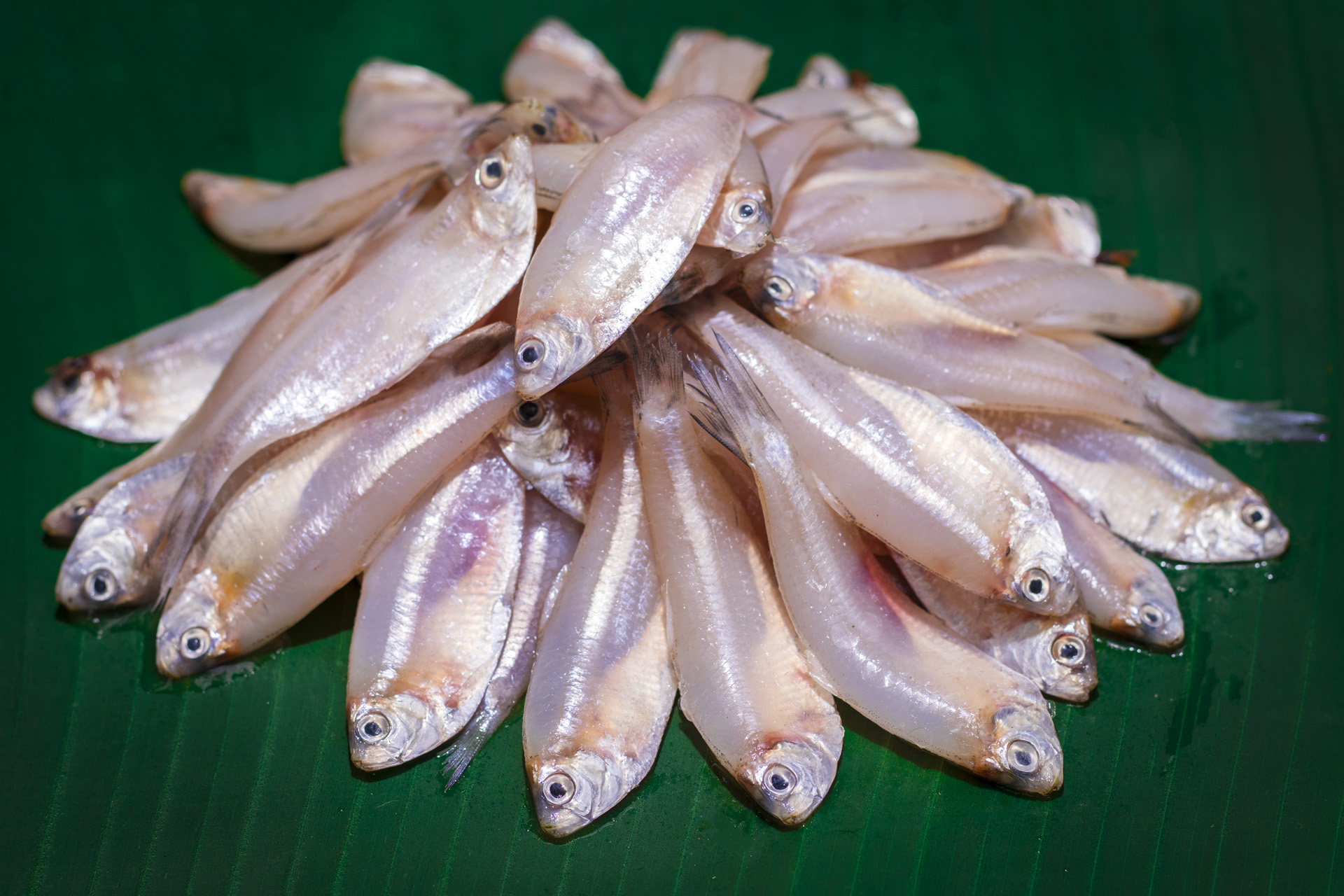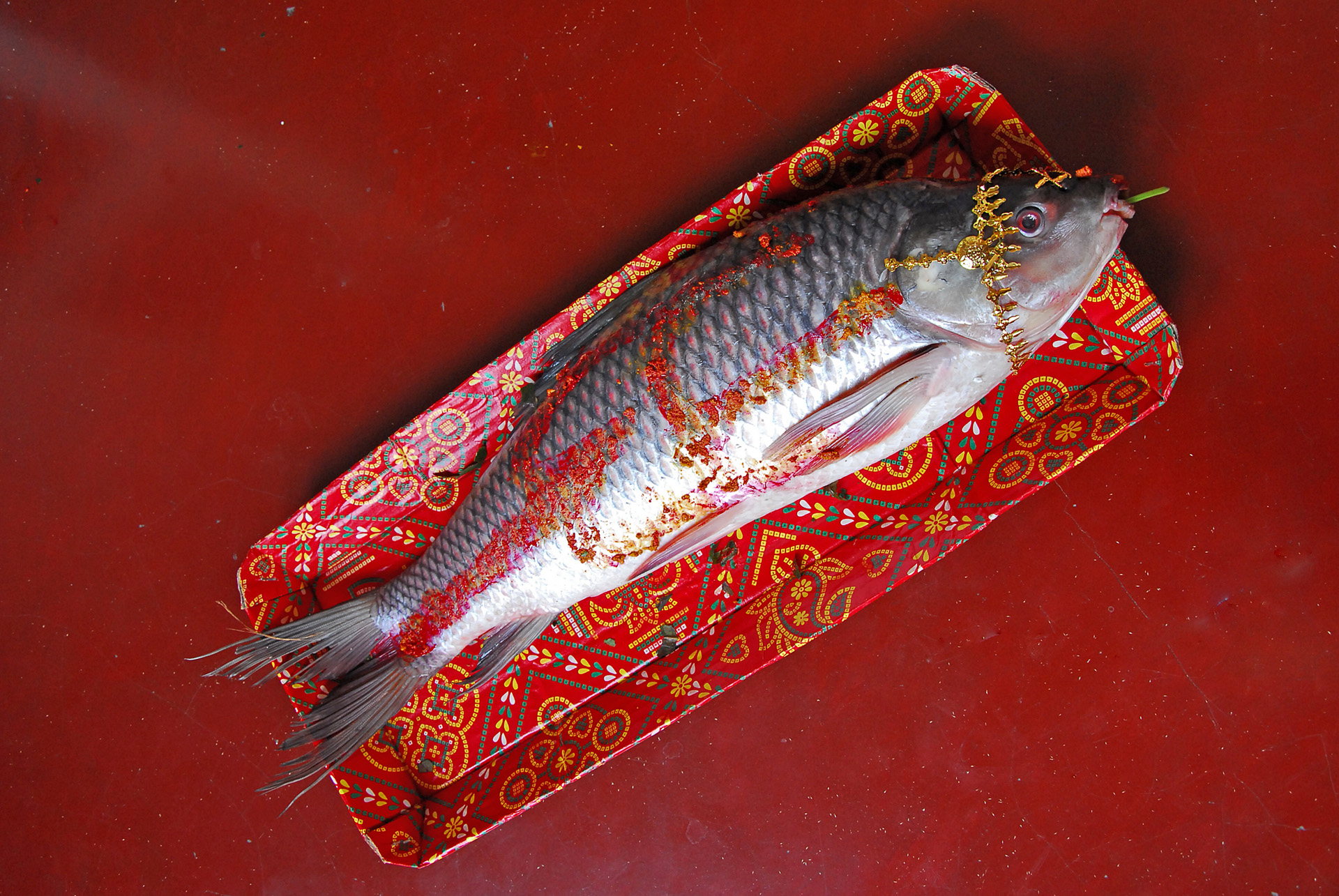Kintu sabar duranto bakbak
Garam-garam sorshe ilish-bhaate
Raat baarlei ghumanto sab chhauk…(Lorai, by Srijato)
While writing about lorai or fight, Srijato, a young poet from Kolkata, adds candidly, that after a delicious, warm meal of Hilsa fish curry, (prepared in its iconic mustard gravy) all kinds of activism comes to a standstill. It simply allows the person to sink into blissful slumber. Such is the power of the dish!
Hilsa or Ilish, is considered the king of fish; or as the Bengalis would call it, machher raja. Bengal boasts of a vast array of fish which has shaped not just the culinary traditions but the culture of the state as well. Fish as a category of food has permeated through religious beliefs and superstitions as a result of which it has garnered a mytho-cultural status in the Bengali community.
I remember a time when my father would regularly watch football matches in the stadium. Growing up in an age where live telecast of events was unheard of, the purchase of ilish would indicate which team won, East Bengal or Mohan Bagan. So the custom demanded, that if the former won, then the Bangaal from erstwhile East Bengal or Bangladesh would return with an ilish in hand. When my maternal uncle got married, I witnessed for the first time, (to my utter fascination) not only sweets made in the shape of fish but a pair of uncut, uncooked fish which was sent to the bride’s family as part of the wedding tattwa or trousseau. Then came a time when my sister appeared for her first board examinations, an event that was steeped in anxiety and stress. I remember my mother contemplating buying a fish without getting it cut and making sure that my sister had a glimpse of it before setting out to write her exam as a mark of good omen. Now if you are thinking that my family was obsessed with fish that kind of bordered on the “weird,” then you are undoubtedly, wrong. This IS the Bengali way of life. Yes. You read it right!
Apart from rabindrasangeet, the literature and cinema and of course politics, Bengalis take their fish very seriously, not just in terms of satisfying their taste buds and satiating their appetites but attaching a kind of supernatural value to it as well. So, fish is considered to be a symbol of good luck. But let me warn you. Not all fish carry that privilege. It is only the ones with scales. Popular belief has it that if you prepared a scale-less fish and offered it to your friend or relative, you were sure to have a fight or argument with him/her soon which could even lead to permanent damage. Therefore, the fresh water fish was considered to be useful in rituals and social ceremonies. Invariably, fish waded its way through most customs. So on the first day of Asadh, (a Bengali month that falls between June-July), women from the higher castes offer goddess Parvati, fish, in the hope of being delivered from difficult times. The worship of goddess Kali, is often accompanied by the offering of a particular fish called boyal in Bengali, by many who believe in it, irrespective of caste hierarchy. However, one cannot rule out the issue of caste based differences in terms of fish rituals. There remain quite a few customs that are only performed by the lower castes. For instance, on the last day of the Bengali calendar, Lord Shiva, is worshipped by lower caste people through a ritual where they roast fish on the fire which was used to cremate the dead. This fish is then served with rice on a banana leaf and offered to Lord Shiva. Fish is also, interestingly, used in magic. In certain parts of rural Bengal, a small variety of fish called ogol taki, are cut and spread at certain entry points in roads or houses in the hope of being protected from evil spirits. Fish is also used to cure women of infertility. If a woman has a series of miscarriages then the cure is to catch a certain variety of fish, smear sindoor on it and immerse it back into the river by the concerned woman. This is one of the reasons why fishermen who see vermillion marks on their catch, immediately release it back into the river.

Call it totemism or local beliefs, the significance of fish in Bengal go beyond the dining table. The predominance of fish in social life, rituals and religious practices, can be attributed, perhaps, to the geographical location of the state. Bengal resides on the banks of the Hooghly. Rice and fish became its staple diet due to the availability of both, in abundance. It is believed that when the Aryans reached the fertile delta of the Bengal region, they could not get over the taste of the sweet water fish. They, in fact, called it the “fruit of the ocean.” Fish was also considered to be an incarnation or avatar of Lord Vishnu, called Matsya, believed to be the savior of the Veda in the Vedic version of the “flood.” Moreover, Satyavati, the mother of Ved-Vyasa, was also known as Matsyadari. She was the daughter of Adrika, an apsara, who was condemned to live on earth in the form of a fish. It could, perhaps, be these associations of fish brought into Bengal by the Aryans that led to not just its veneration but also its numerous usages in rituals.
Whatever be the ritualistic connotations of fish, from ilish to rohu to paabda, what remains static is the love for fish. Fried, grilled, steamed, with or without mustard, the fish surely is a gustatory delight for not just Bengalis but people in other parts of India as well and this breed is simply on the rise. And as far as the ritualistic/social significance of the fish is concerned, I have one thing to say: you can accept it or reject it but you surely cannot ignore it. So long!
This article was first published in ourfrontcover.com


I am overwhelmed to know about the social and ritualistic importance of Fish .Makes for some very interesting reading . Thanks Anu 👍🏼